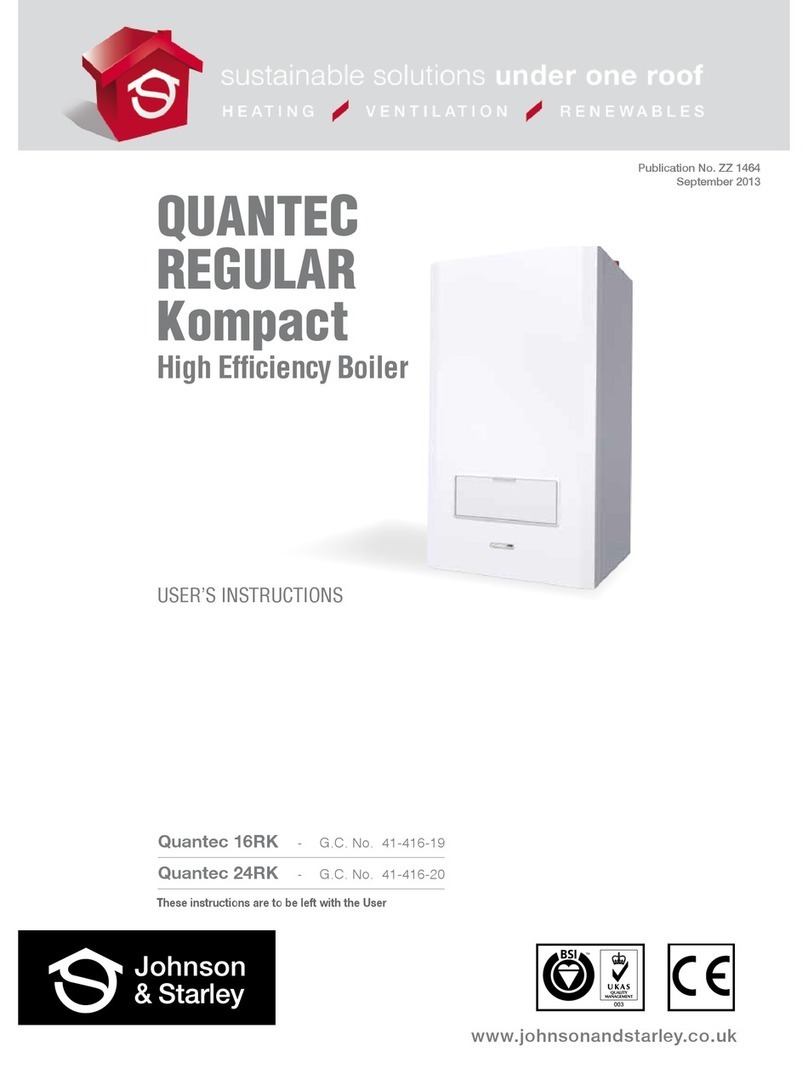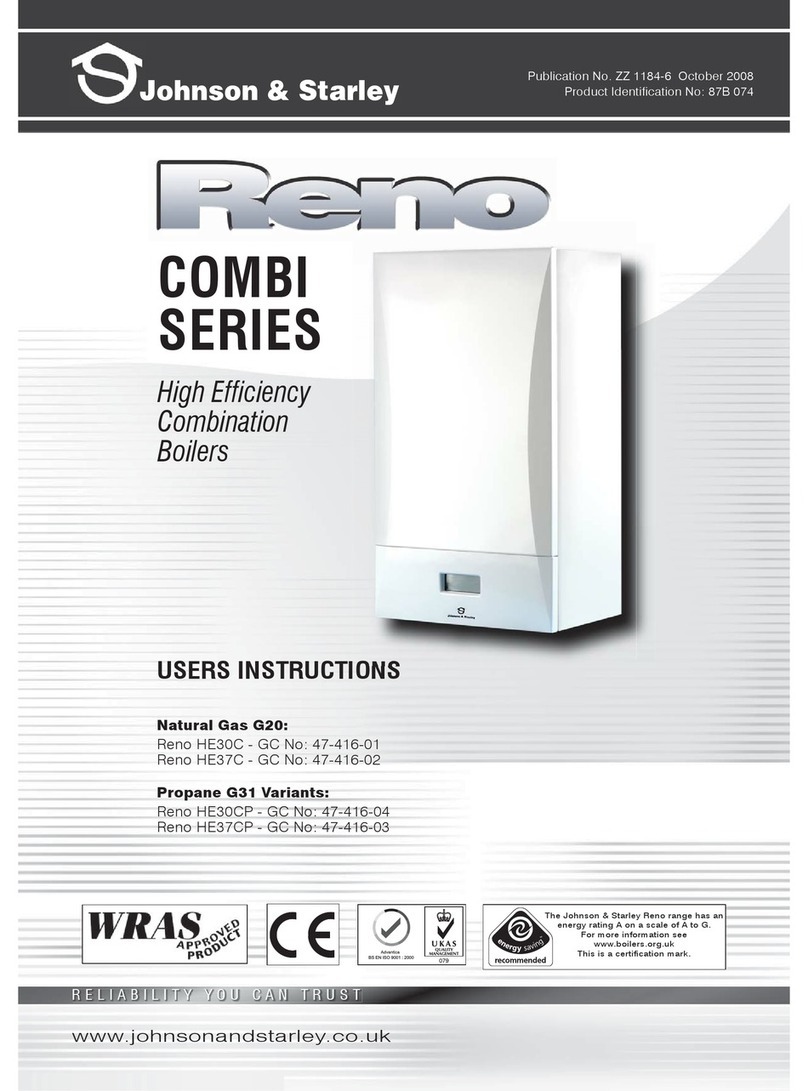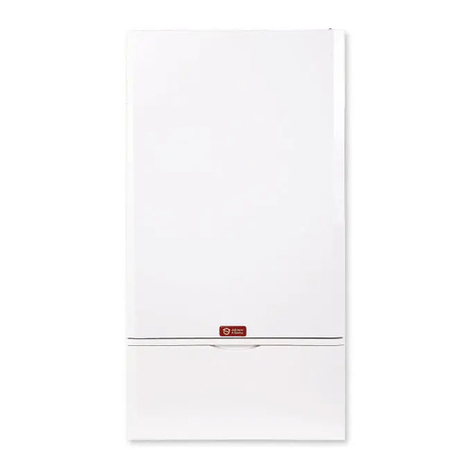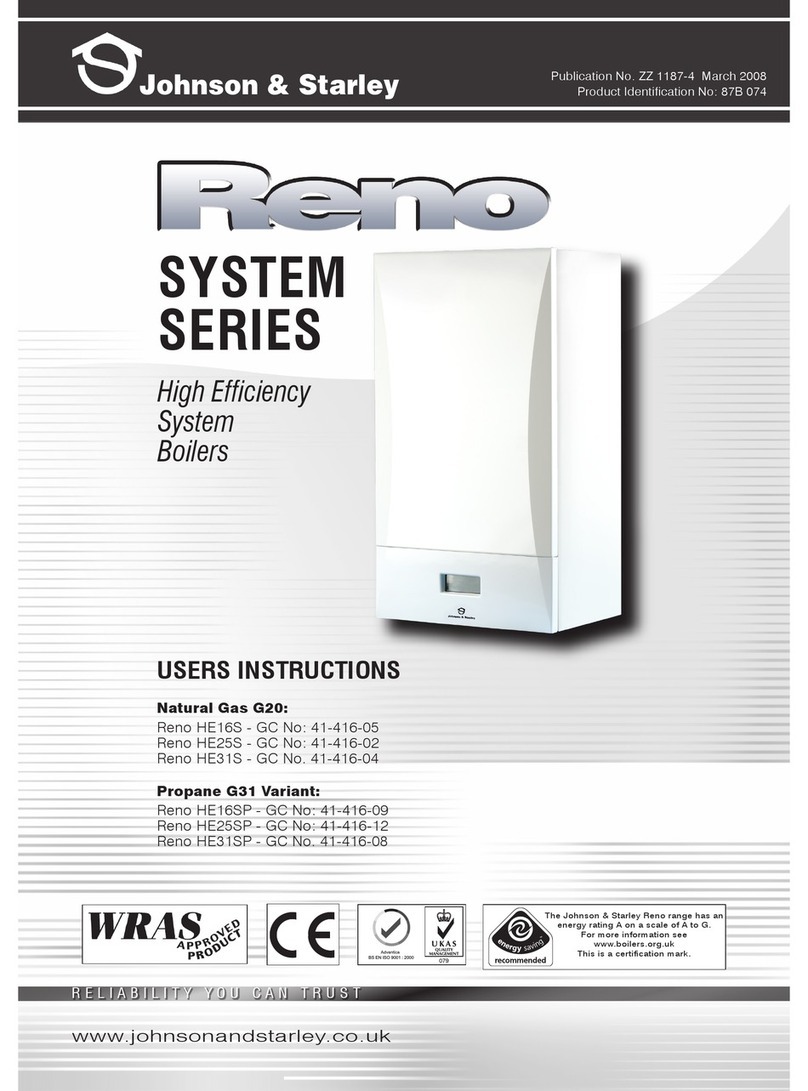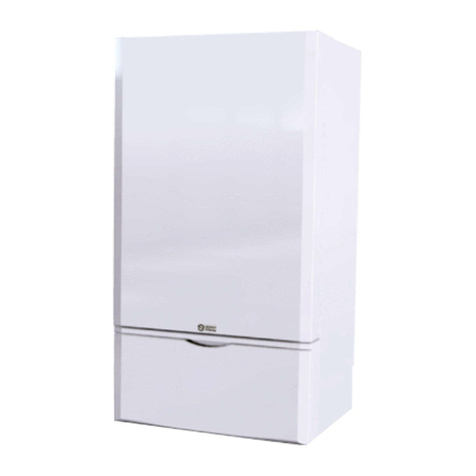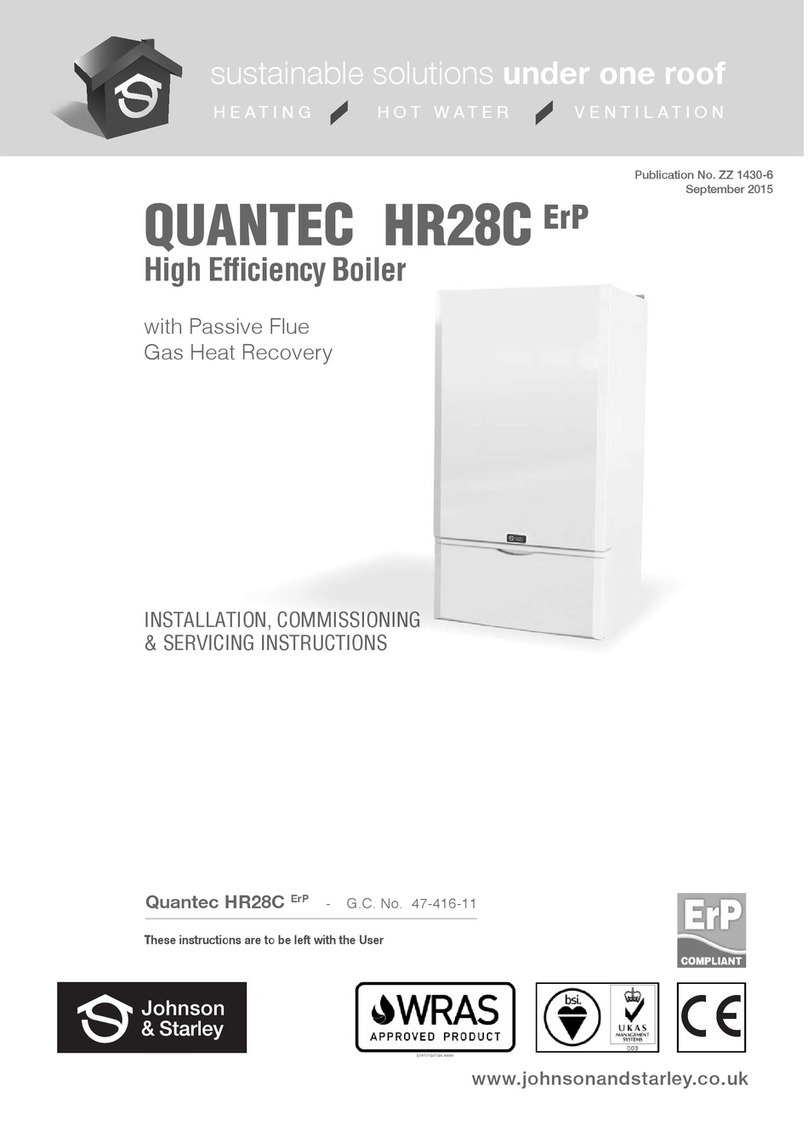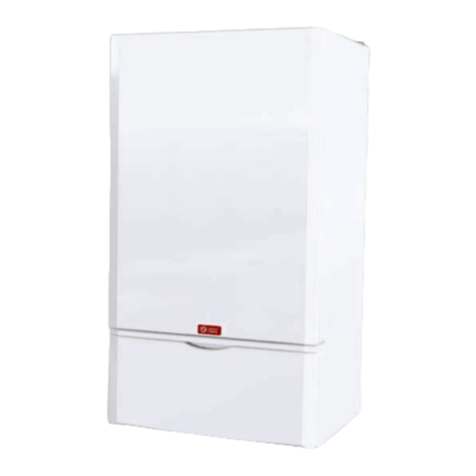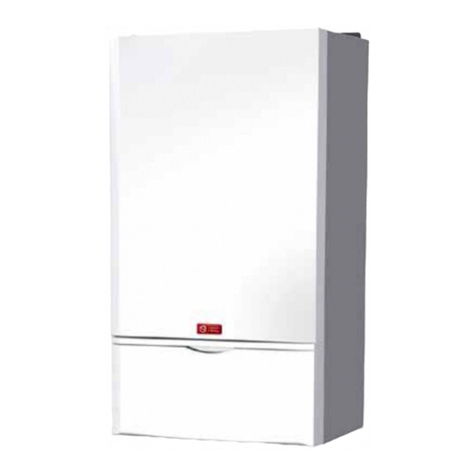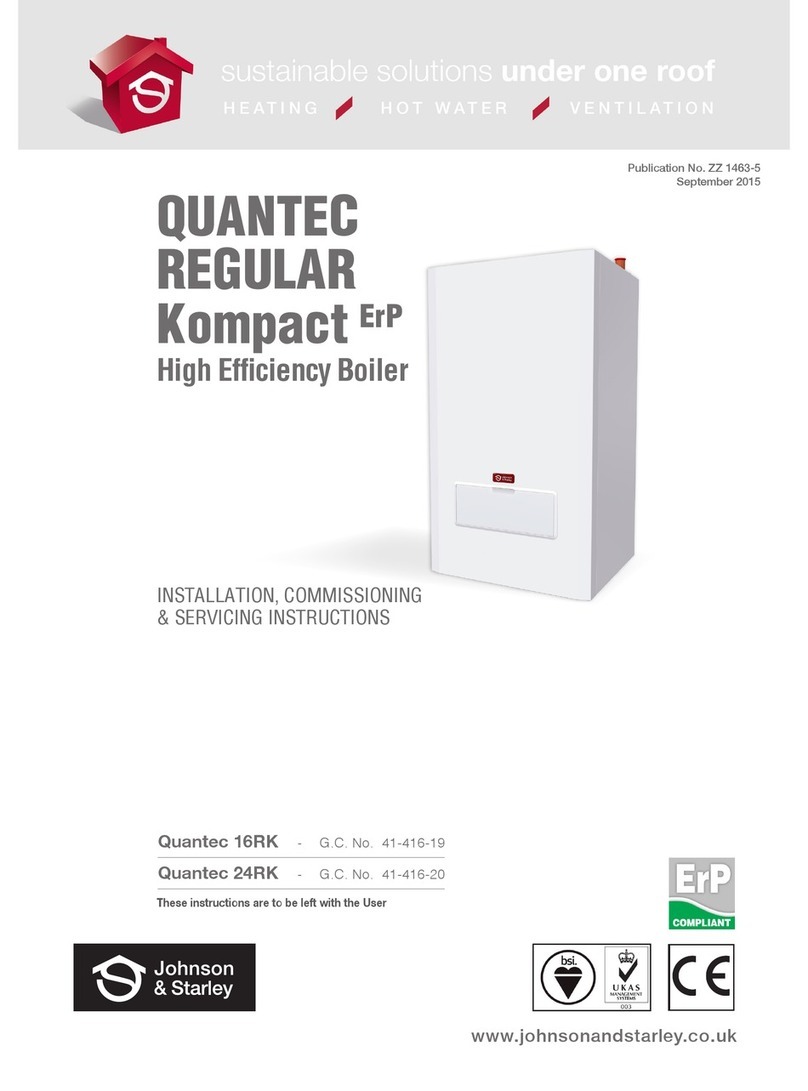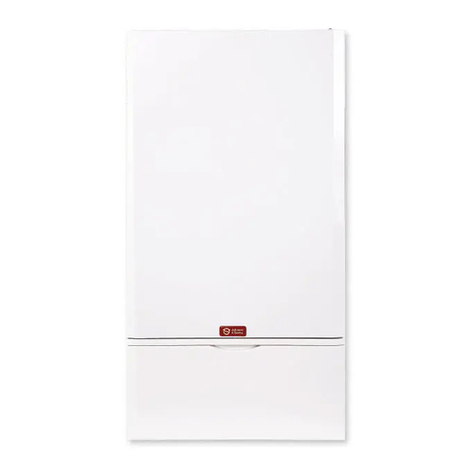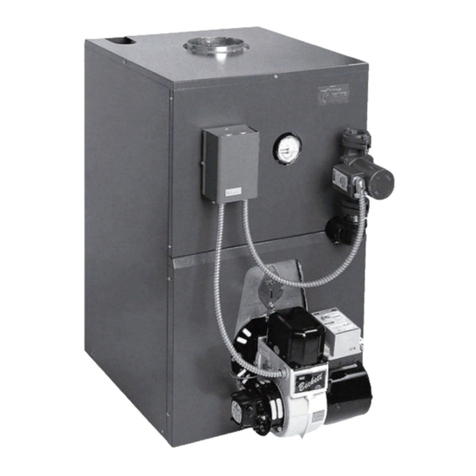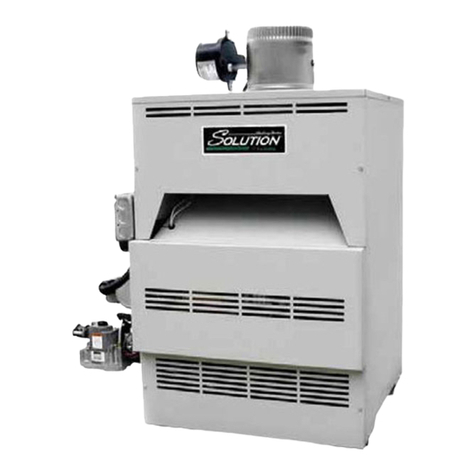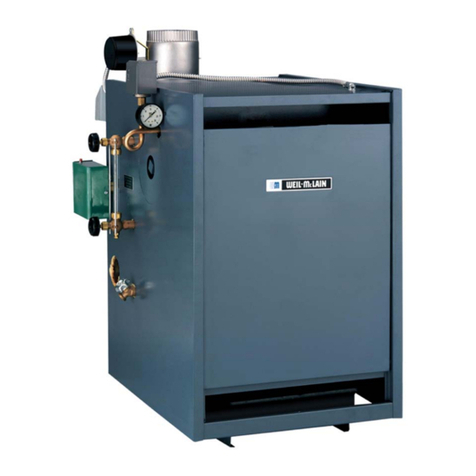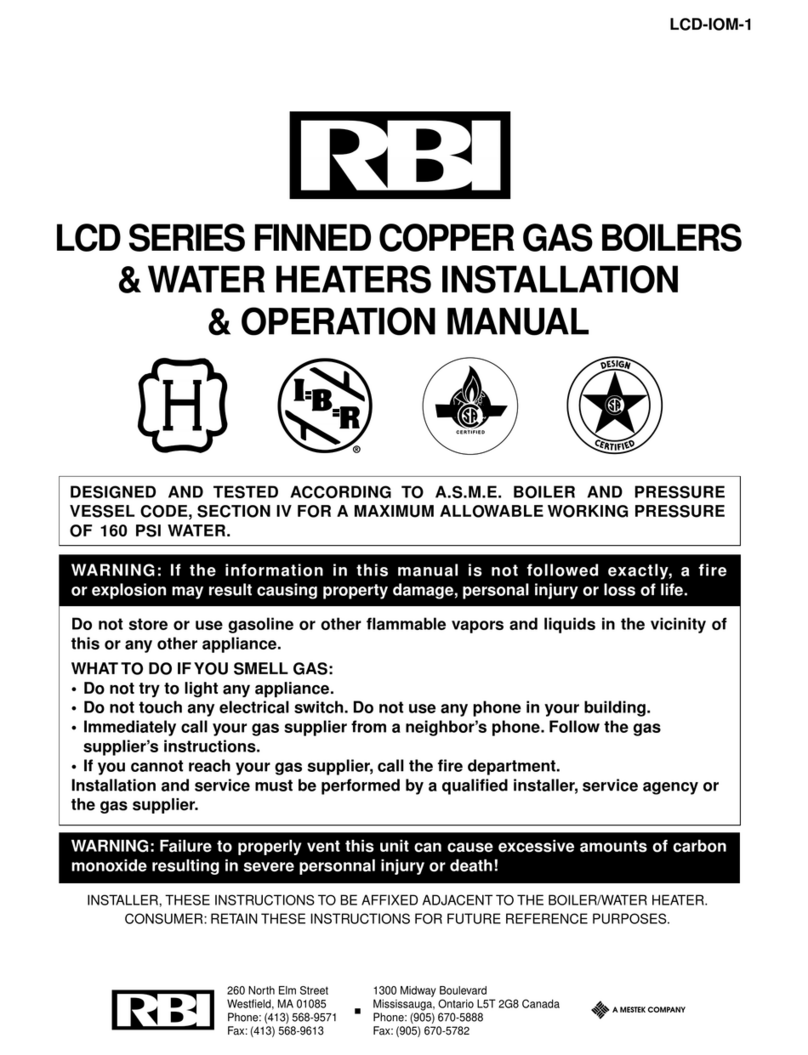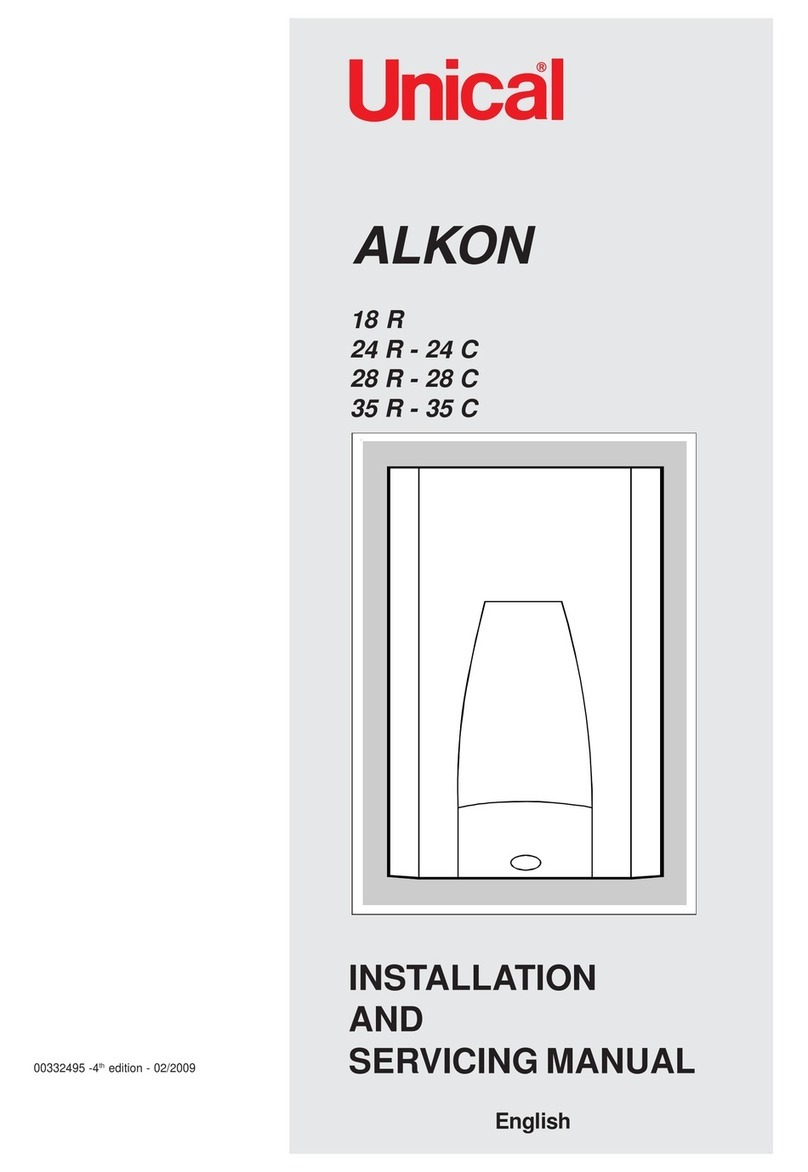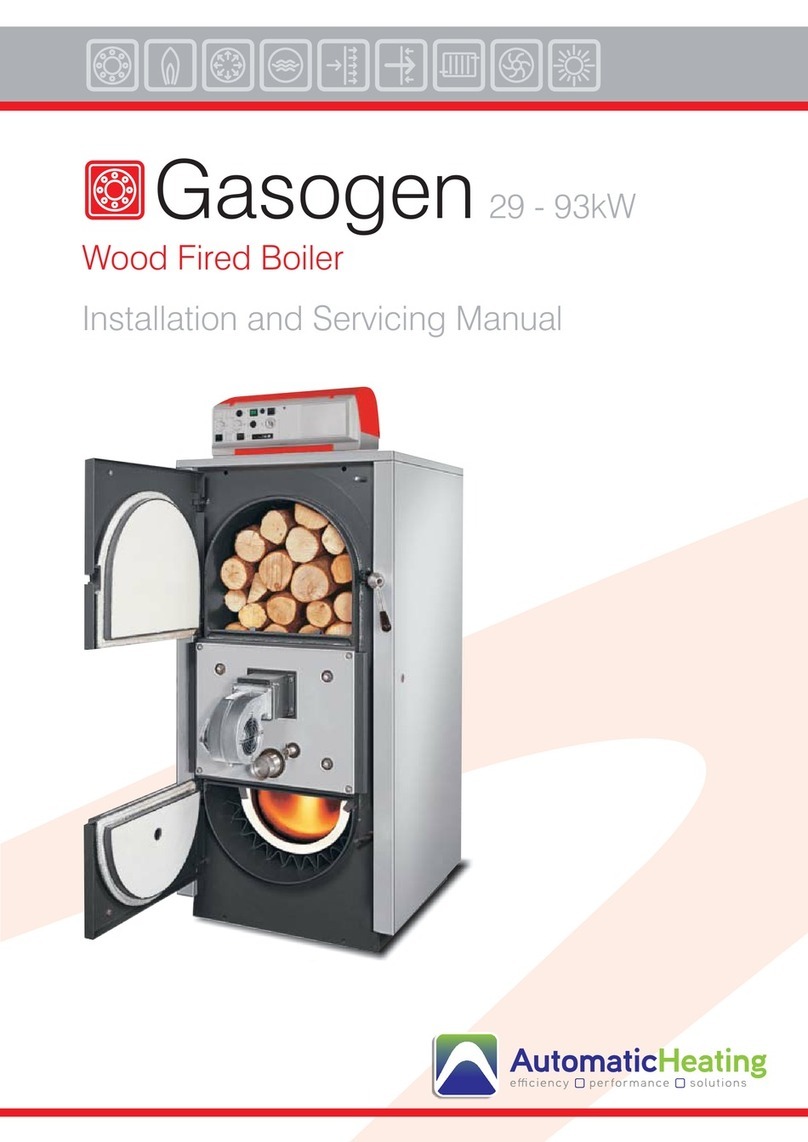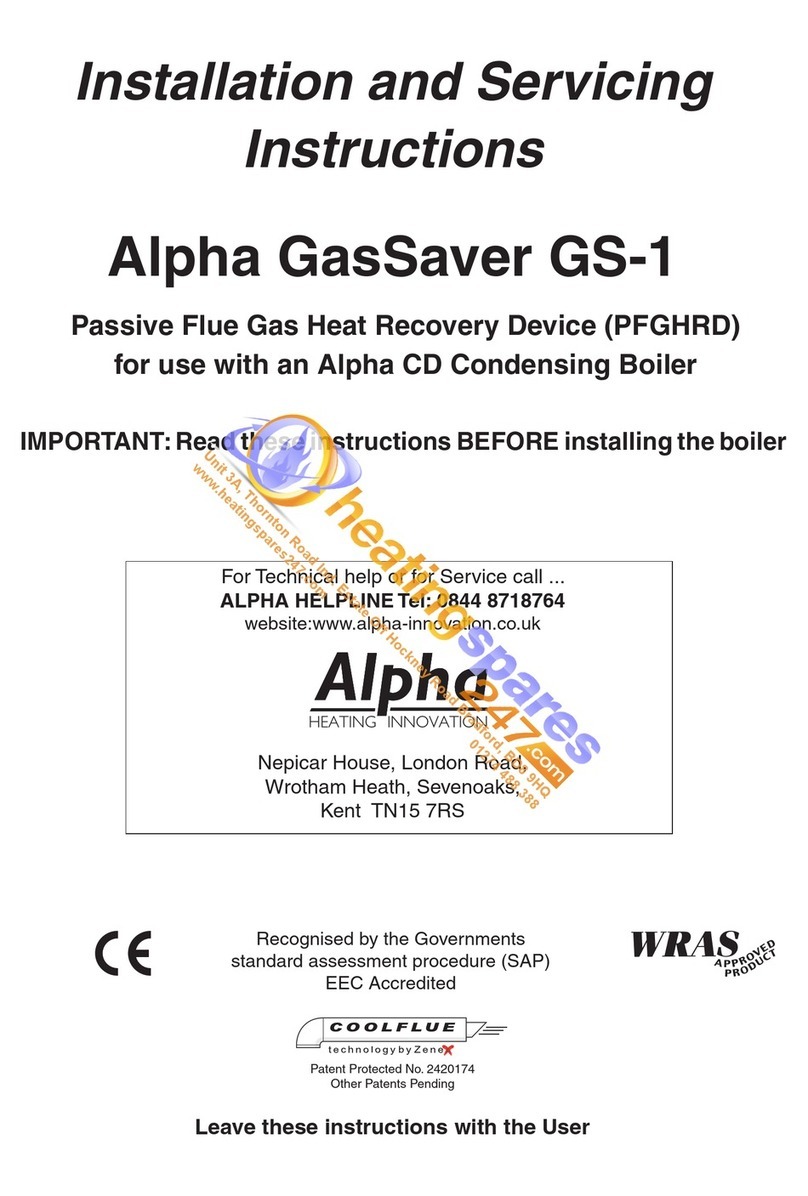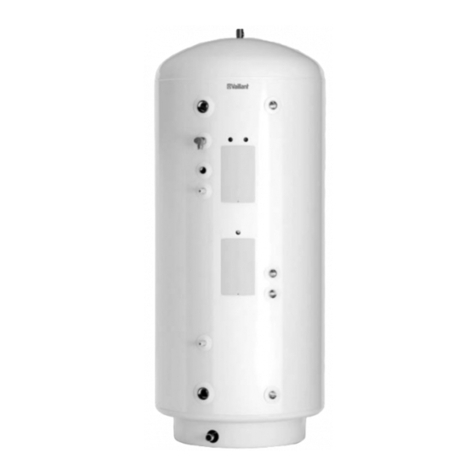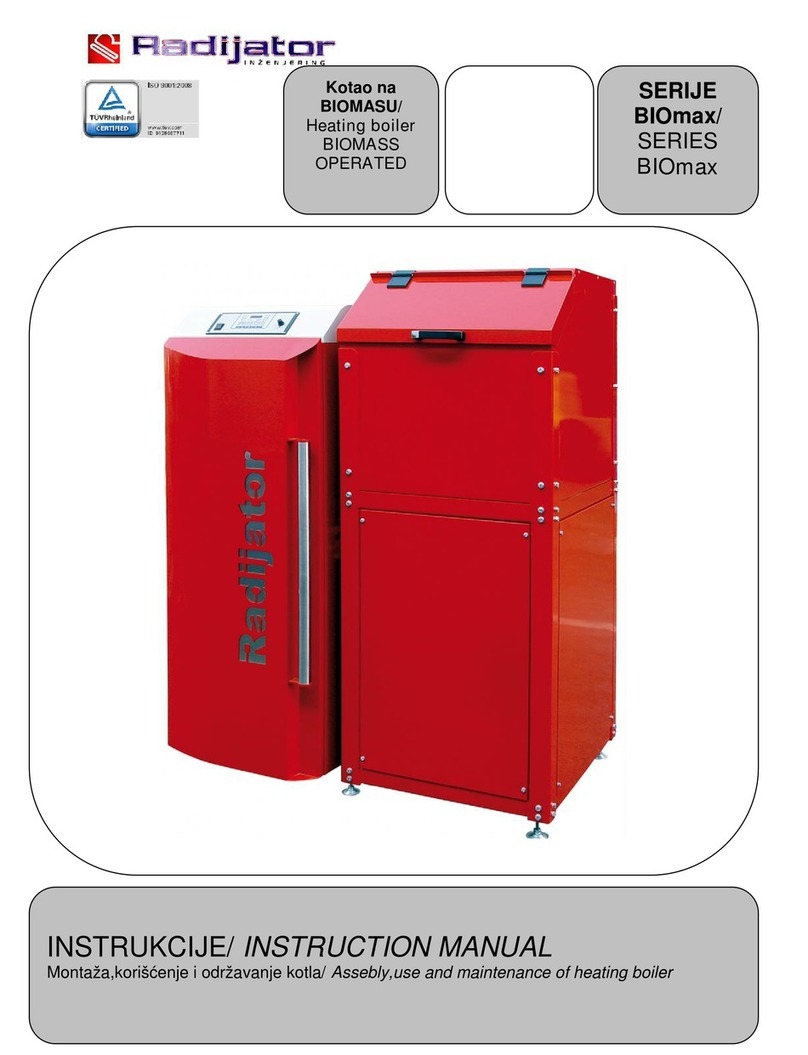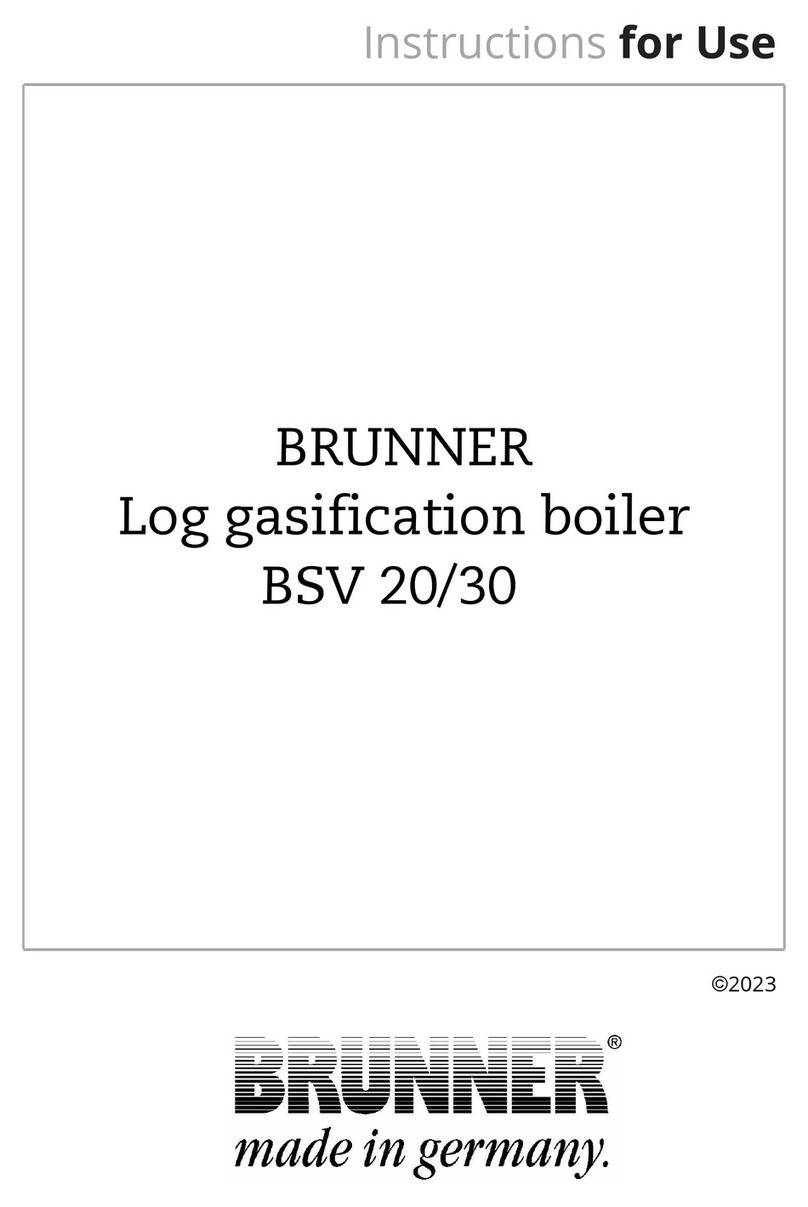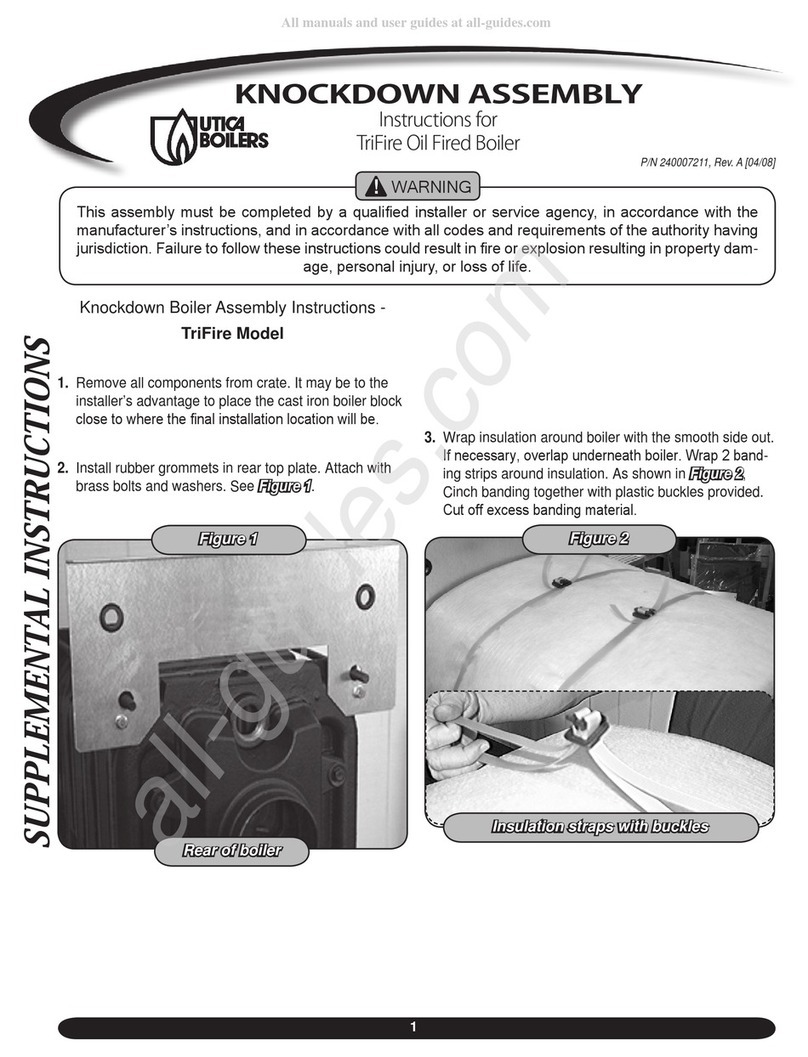www.johnsonandstarley.co.uk 7
Additional Control Options:
Should an outside temperature compensation system be required, Opentherm kits are available direct from Johnson &
Starley. (Part No.1000-0019720)
2.5 Appliance Location:
The appliance is not suitable for external installation unless it is protected from the elements by a suitable enclosure.
The enclosure must provide the required clearances for installation, servicing and maintenance as well as the correct
level of ventilation. The selected position should allow for a suitable flue system to be installed.
When installed in a timber frame building guidance should be taken from the gas industry publication IGE/UP-7 (Guide
for Gas Installations in Timber Frame Housing).
BS 6798 gives details of the essential features for a compartment or cupboard where a gas appliance is to be
installed. An existing cupboard may require modification.
If the appliance is installed in a room containing a bath or shower it is important to locate the electrical switch in a
position where it cannot be touched by anyone using the bath or shower. The current IEE Wiring Regulations (BS
7671) for England and the electrical provision of the Building Regulations for Scotland gives details.
Room ventilation for the appliance is not necessary as the appliance draws its combustion air from outside of the
building and cupboard or compartment ventilation is not necessary providing that the minimum clearances are main-
tained. However, reference should be made to BS 5440 Pt.2
2.6 Heating System Requirements:
A typical system is shown at fig. 2.2 which incorporates radiators, an automatic by-pass valve and a drain facility that
must be provided at the lowest point in the system to allow complete drain down. The installation should be designed
to operate with a flow temperature of up to 90oC.
Pump
The pump should be fitted on the flow side of the boiler and have isolating valves each side to allow removal without
draining the system. A variable duty pump should be set to give a temperature difference of no greater than 20oC
between flow and return with the thermostat set at maximum (around 82oC) and a flow rate as shown in table 2.4.
Reference should also be made to 2.4 for the pressure loss of the boiler and consideration MUST be given to the fact
that high resistance microbore systems may require a higher duty pump.
Pipework Sizing: In order to keep the noise of the system to a minimum, the velocity of water should be kept below
1.5 m/s and it should be noted that the appliance is designed to operate with a temperature differential of 20oC
between flow and return. The maximum flow rate is 0.19 kg/s (HE16H) 0.3 kg/s (HE25H) and 0.38 kg/s (HE31H)
which through a 22mm pipe gives a velocity of 0.75 m/z (HE16H) 1.00 m/s. (HE25H) and 1.25 m/s (HE31H)
Therefore, the recommended minimum pipe size for the main carcass is 22mm..
Sealed Water Systems: The installation must comply with the appropriate requirements of the current issue of
BS 4814, BS 5449, BS 6759, BS 6798 and BS 7074 part 1 and 2. See table 2-5 below.
Water Treatment: It is important that the system is flushed thoroughly before the appliance is left to operate (as rec-
ommended in BS 7593) in order to maintain an efficiently operating heating system. For replacement installations, the
system MUST be flushed with the old boiler in situ, in order to prevent the Reno becoming a trap for system debris.
Once the system has been flushed, an inhibitor (suitable for stainless steel heat exchangers should be added.
Appropriate inhibitors are available, for example Sentinel and Fernox.
Failure to carry out the above procedure will invalidate the guarantee!
NOTE: Water supplied from a water softener MUST NOT be used unless a specially formulated corrosion inhibitor is
added (see BS 6798)
Controls: As a minimum it is recommended that a 2 channel timer and room thermostat is installed to control the appli-
ance. Thermostatic radiator valves may be fitted to the system but must not be fitted in the room where the room thermo-
stat is fitted. There must be at least one radiator installed with lock shield valves that should not be closed. Further guid-
ance can be obtained from the Domestic Heating and Hot Water Guide to the building regulations and GPG 302
NOTE: a differential pressure bypass valve MUST be installed to maintain the following minimum flow rates:
12 L/min - HE16H
18 L/min - HE25H
23 L/min - HE31H
(20odifferential at maximum heat input)
2.7 Domestic Hot Water System Requirements:
Domestic hot water circuits and their components must be in accordance with the relevant standards and water supply
regulations. Further guidance and recommendations can be found in the building regulations G17 to 24 and R17 to 24.

